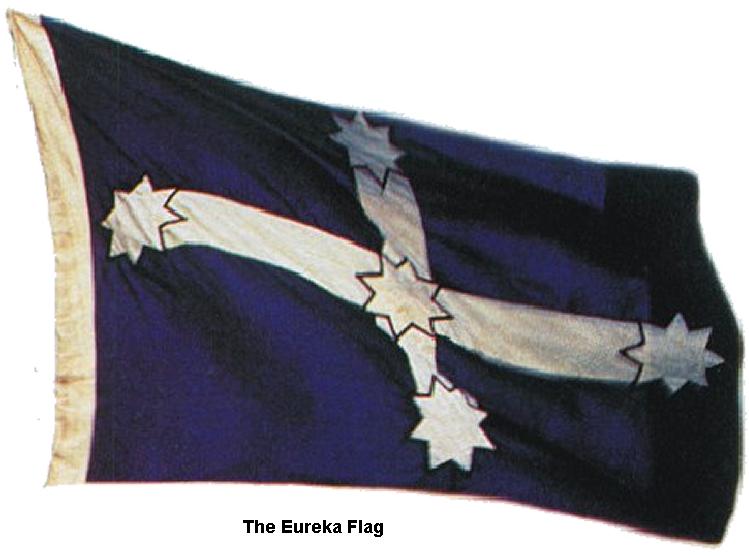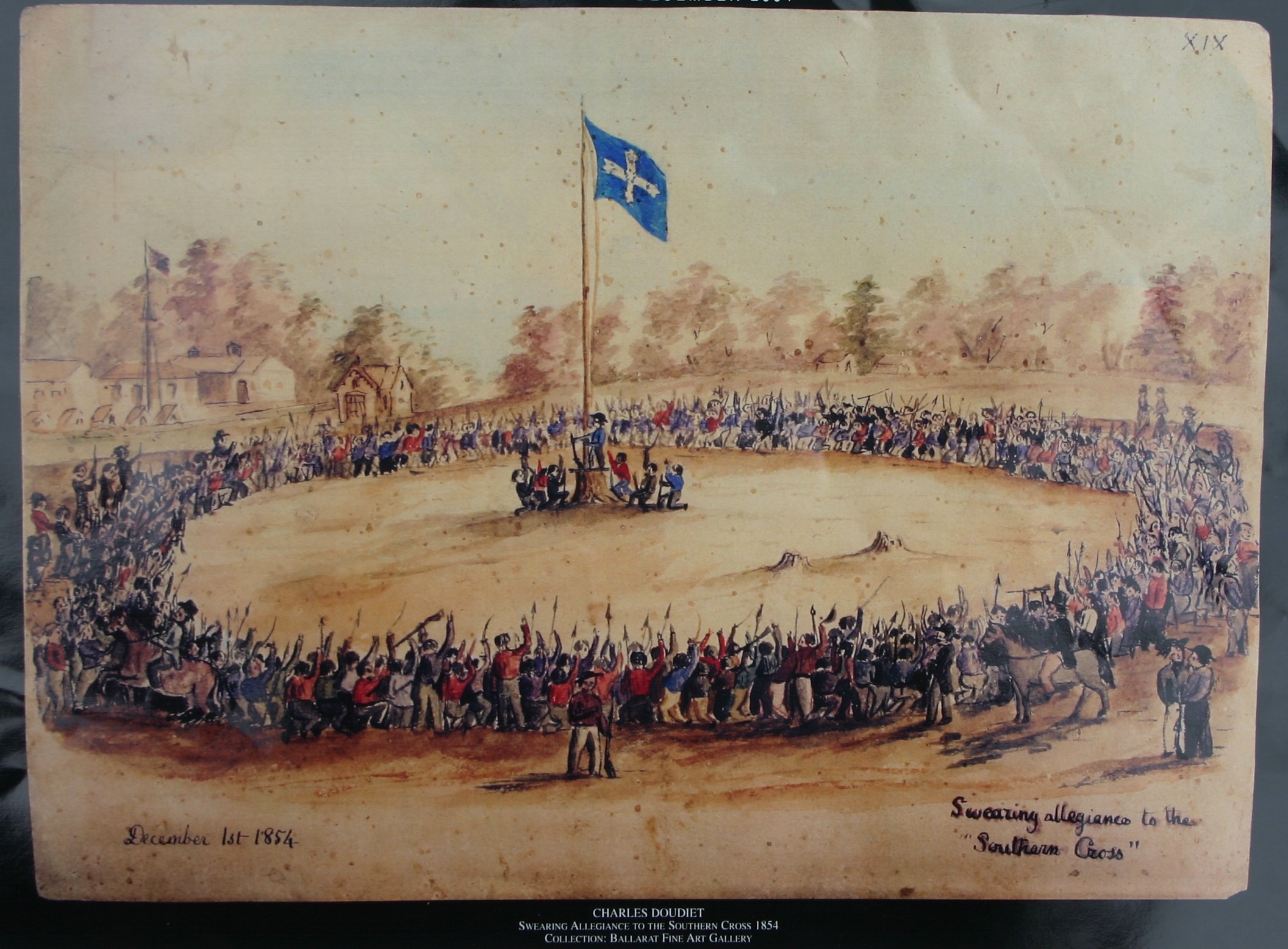The Eureka Stockade Eureka is an exclamation of triumph. It means- 'I have found it!' The Eureka Stockade is a fort built by miners who wanted to fight for their rights. They did like the licence system, where miners had to pay for a licence which would allow them to mine for gold. They also hated the dishonest, brutal police who showed the most violence on the gold fields. The government had made the licence system to prevent everyone from leaving their jobs and rushing to the gold fields, but it had only caused a riot- the Eureka Rebellion. |
The Beginning of the Rebellion
The government made the licence system so that less people would be less encouraged to leave their jobs to become miners. Miners had to pay 30 shillings every month to renew their licences. Licences were checked twice a week, and if police caught a miner with no licence, they were extremely violent, chaining, whipping and torturing them.
In Ballarat, Victoria, the diggers’ anger rose when man who committed murder had his charges dropped and got away with his outrageous crime. Apparently, he had been a friend of one of the police, and was dismissed at court, free of punishment. This caused the rebellion to set alight. A mob of diggers set fire to Bentley’s Hotel, where the murder had taken place. Three of the miners were arrested and more soldiers were sent to the diggings. The miners’ rage had finally over flowed. |
The Eureka Rebellion
On the 11th of November, 1854, 10,000 diggers congregated to demand the licence system to be dropped, and that all males were to have the right to vote (in those days only miners with licences who lived in that area for six months could vote). The Governor refused to yield to the miner’s protests, and the miners’ anger burst. The Eureka Flag On 29th November, miners displayed the Eureka flag. It was blue with a white cross and five stars representing the Southern Cross. They publically burnt their licences then even elected leaders.
The Eureka Stockade The next day, there was another large mass on Bakery Hill where more licences were burnt. The Attack The well- known Eureka Stockade attack happened during the early hours of Sunday, 3rd of December. Several hundred soldiers and police attacked the stockade unexpectedly. They outnumbered the miners and were better armed. There were only about two hundred miners left, as many had snuck away. The miners were defeated easily, and the whole affair ended in twenty minutes. Twenty-two diggers and five soldiers were killed, and many were injured. Peter Lalor's arm had been shattered by a musket ball, and he later had it amputated (cut off).
In March 1855, a Commission that had been investigating the case reported to the government. All the diggers’ wishes were fulfilled. The licence cost one pound per year rather than eight pounds. The powerful position of the Gold Commissioner was replaced by a system of wardens. In 1855, eight miners became representatives for the Victorian government, and Peter Lalor was among them.
Peter Lalor
|



 Peter Lalor, a renowned leader of the rebels, led the diggers to Eureka diggings. It had been named after a deep seam of land called the Eureka lead. Here, the Eureka Stockade – a wooden fort which circled about an acre (4046 metre squares) of land – was built. Around 1000 rebels stood beneath the flag and swore an oath. They prepared to fight, unaware of the hopeless situation ahead of them.
Peter Lalor, a renowned leader of the rebels, led the diggers to Eureka diggings. It had been named after a deep seam of land called the Eureka lead. Here, the Eureka Stockade – a wooden fort which circled about an acre (4046 metre squares) of land – was built. Around 1000 rebels stood beneath the flag and swore an oath. They prepared to fight, unaware of the hopeless situation ahead of them.  The Outcome
The Outcome